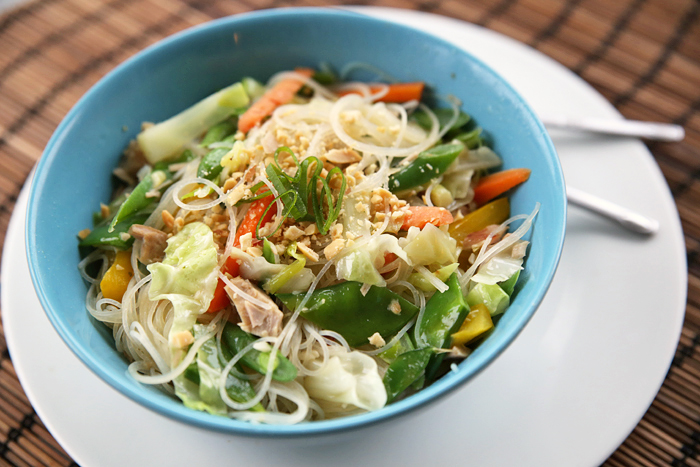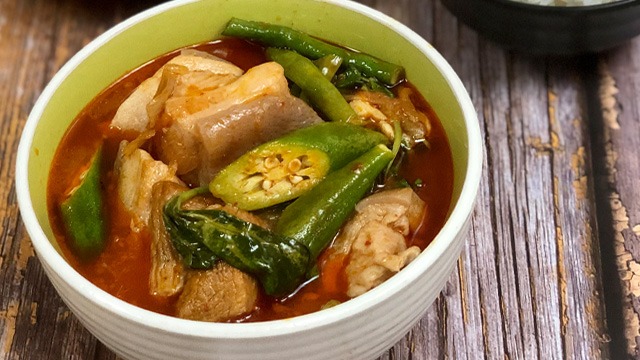Explore Iconic Filipino Food Recipes Everyone Loves.
Explore Iconic Filipino Food Recipes Everyone Loves.
Blog Article
Authentic Filipino Food Recipes to Try in your home
Discovering genuine Filipino food dishes provides a chance to value the elaborate flavors and social value behind each meal. Using fresh, regional components is vital, as is welcoming public dining-- a characteristic of Filipino culture.
Popular Filipino Cuisines
Filipino food boasts an abundant tapestry of flavors and traditions, with over a loads legendary meals that highlight the nation's diverse social impacts. One of the most well-known dishes is Adobo, a savory stew commonly made with chicken or pork, seasoned in vinegar, soy sauce, garlic, and seasonings. Its appetizing taste profile makes it a staple in Filipino households.
An additional beloved recipe is Sinigang, a sour soup commonly made with tamarind, tomatoes, and various vegetables. This meal can include pork, shrimp, or fish, and its rejuvenating preference is perfect for warm climates. For those with a pleasant tooth, Leche Flan-- a creamy caramel custard-- works as a popular treat, showcasing the Filipino penchant for rich, pleasant tastes.
Kare-Kare, a passionate oxtail stew with a thick peanut sauce, together with the renowned lumpia, or spring rolls, further exemplify the selection discovered in Filipino cuisine. Each dish not just provides special tastes yet also informs a story of local components and historical impacts, making Filipino food a dynamic reflection of its culture and heritage.
Crucial Ingredients for Filipino Food Preparation
The significance of Filipino cooking depends on its vital ingredients, which act as the structure for the nation's precious recipes. A selection of tastes and structures come with each other, showcasing the varied social influences that form Filipino food.
Secret active ingredients include rice, the staple that comes with almost every dish, signifying nourishment and neighborhood. Soy sauce, vinegar, and fish sauce (patis) are crucial for spices, conveying umami and deepness to dishes. Fresh natural herbs like cilantro and basil add fragrant freshness, while garlic, onion, and ginger offer a durable flavor base.
Protein resources such as pork, chicken, and seafood are central to several dishes, commonly marinaded to improve taste. Vegetables like eggplant, bitter melon, and green beans add vital nutrients and balance - Filipino food recipes. Coconut milk is one more considerable active ingredient, offering creaminess and a refined sweetness to various stews and desserts
Lastly, calamansi, a citrus fruit, uses a revitalizing tang that raises meals and beverages alike. With each other, these components produce the vivid and rich tapestry of flavors that specify Filipino food, making it both calming and distinct. Understanding these fundamentals is important for any individual looking to replicate authentic Filipino recipes in the house.
Step-by-Step Recipe Overview

Beginning by preparing your active ingredients. For Adobo, chop the meat into consistent items and season it in soy sauce, vinegar, garlic, and bay leaves for a minimum of 30 mins. Next, heat oil in a pan and sauté the garlic and onions till great smelling, after that include the marinated meat, allowing it to brownish equally.
For Sinigang, begin by steaming water in a pot and adding your option of meat. When tender, integrate tamarind paste or fresh tamarind for that signature sour taste. Adhere to with vegetables like radish and kangkong, cooking till simply tender.

Tips for Authentic Taste
Usually, achieving genuine flavor in Filipino recipes depends upon the careful selection and treatment of ingredients. Beginning with fresh, top quality produce, as the vibrancy of vegetables and natural herbs dramatically enhances the dish's total preference. Staples like garlic, onions, and ginger form the fragrant structure for lots of dishes; utilizing them in proper percentages is essential.
Selecting the best healthy protein is similarly essential. Conventional adobo often uses chicken or pork, marinated to take in the marinate's full taste. In addition, consider sourcing in your area generated or regional active ingredients, as they can give authenticity that store-bought choices do not have.
Food preparation techniques likewise play a crucial duty. Slow-cooking approaches, such as braising or stewing, permit tastes to blend magnificently, while frying can add a gratifying texture. Do not forget seasoning; utilizing salt, fish sauce, or soy sauce at the appropriate moments can raise a dish substantially.
Offering and Taking Pleasure In Filipino Food
Culinary experiences are enriched when Filipino food is served with focus to tradition and area. The practice of sharing meals is main to Filipino culture, representing unity and hospitality. When serving Filipino recipes, think about using conventional serveware, such as clay pots or bamboo baskets, which boost the credibility of the experience.
Normally, Filipino link meals are taken pleasure in family-style, with a variety of recipes placed at the center of the table. This public strategy straight from the source motivates communication and permits visitors to example different tastes. A well-curated spread may include staples like adobo, sinigang, and lumpia, enhanced by rice, which is a basic element of every meal.
Coming with the food with conventional dressings, such as soy sauce, vinegar, or chili paste, can raise the eating experience, welcoming diners to tailor their plates to their choices. Additionally, including regional drinks, like calamansi juice or tuba, can improve the total taste profile.
Conclusion

Report this page